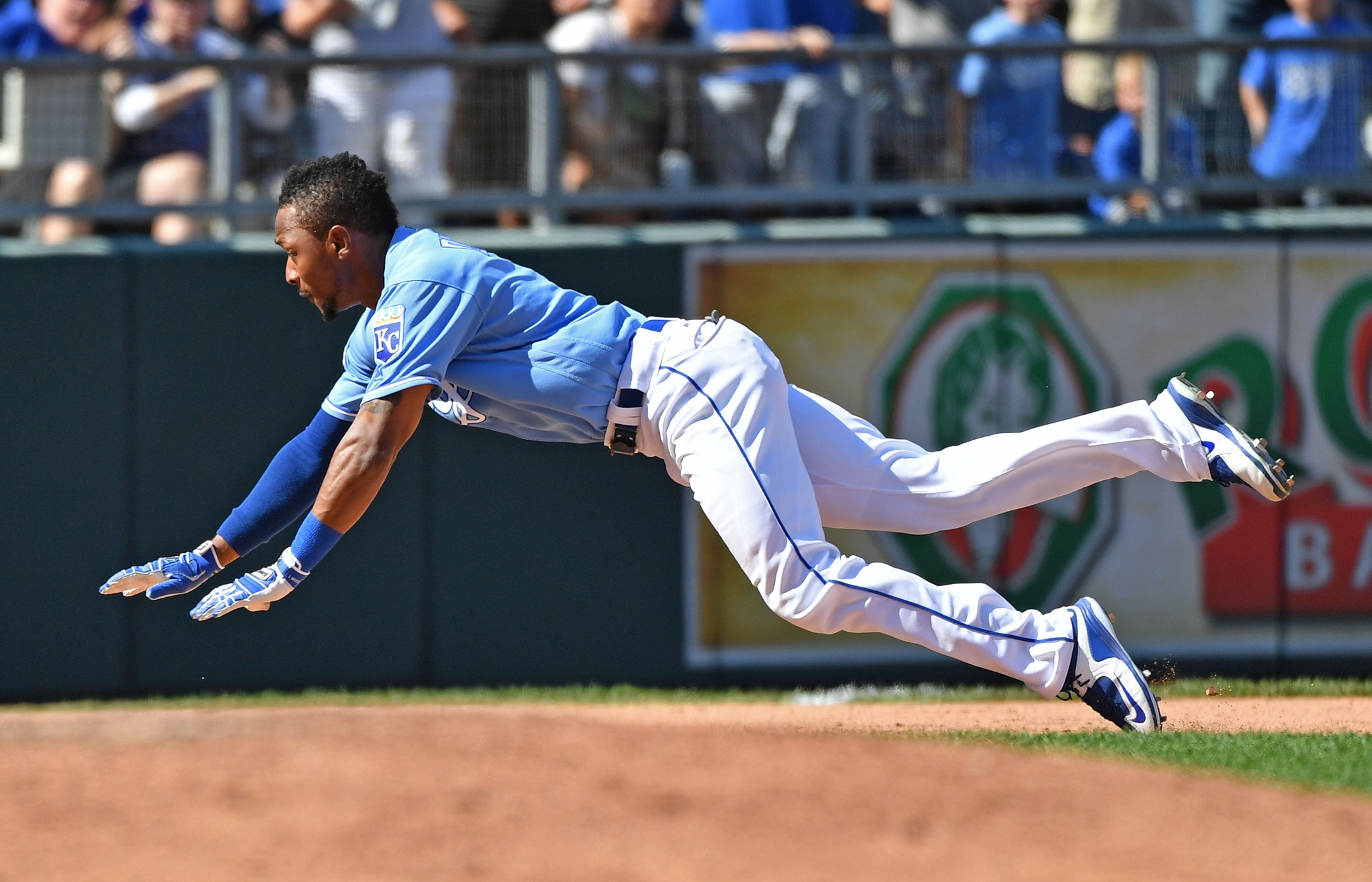Since the Royals resurgence began in 2013, they’ve earned a reputation as a team with speed. Between the 2013-2015 seasons, the Royals stole 410 bases, which led all of baseball. The second-highest total belonged to the Rangers, with 355. Among the 90 team seasons during that time frame, the Royals own the top two totals, from 2013 and 2014. Last year’s squad stole “only” 104 bases, which was still good for second in the league. The Royals ran all over the place, but of course, you knew that.
It wasn’t just that the Royals stole bases. They stole them at an 80 percent success rate, which was, once again, the best in baseball. And because the Royals were so effective at stealing bases, they were quite aggressive when given opportunities to steal. Over the previous three seasons, the Royals attempted to steal in roughly 7.7 percent of their stolen base opportunities. Only the Rangers, Astros, and Billy Hamilton-led Reds are in that stratosphere. But when you combine the Royals’ aggressiveness with their effectiveness, they were without equal.
That is, until this season.
Now, don’t get me wrong. The Royals have still stolen a lot of bases this season. Entering Wednesday’s game, they were at 99 total, with just under a month to go. However, their success rate is down to 77 percent, and they’ve only attempted to steal in 6.7 percent of their stolen base opportunities. That’s not bad, but we can also look at things in more detail to see how things have changed as the season has progressed.
In the first half, the Royals stole 50 bases. That total was good for 12th in baseball, and sixth in the league. Their successes also came in 68 attempts, so that’s a rate of less than 74 percent. To make matters worse, they were far less aggressive, taking off in only 5.7 percent of their opportunities. A lower success rate should justify a slightly lower takeoff rate, but that’s a significant nosedive.
Since the break, though, something has changed. They’ve already stolen 49 bases in 51 games this half, which leads the league. Their success rate is pushing 80 percent, and that has emboldened them to be more aggressive, attempting to steal in 9.6 percent of their opportunities.
That mark is up even more in the last two weeks, as they’ve stolen 23 bases in their last 13 games, and they’ve been caught five times. Those 28 stolen base attempts have come in 166 opportunities, for a takeoff rate of 16.9 percent.
The Royals have returned to running like the Royals, and it’s resulted in more runs.
Despite posting an on-base percentage of just .305 in the second half, the Royals have scored 4.4 runs per game. In the first half, they scored four runs per game, with an on-base percentage of .320. They’re now making the most of their opportunities, due in large part to their rediscovered aggressiveness on the base paths. Because they still aren’t an overly powerful team (games in Minnesota notwithstanding), they’ve had to rely on their speed to generate offense, and it’s working.
The drastic increase in takeoff rate could be easily explained if the roster looked vastly different in each part of the season, but that’s not really the case. A few players have gotten more time lately – namely, Jarrod Dyson and Raul Mondesi – but even the players who’ve remained in the regular lineup have added some aggressiveness.
Paulo Orlando has been on-base far less frequently in the second half, but he’s stolen seven bases since the break, after stealing five prior to it. Same goes for Lorenzo Cain, though his opportunities have been lower due to his time on the disabled list. Still, he’s swiped seven bags in 29 games, while only stealing six in his first 73 games. Alex Gordon has four steals in the second half, after collecting three in 57 first-half games.
Oddly enough, the biggest outlier is Alcides Escobar, who has just two stolen bases since the break, despite a .320 on-base percentage. In the first half, he stole 12 bases, which was impressive considering he only reached base eight times. Approximately.
Actually, Escobar’s lower stolen base total makes sense when you remember he’s been hitting behind Gordon for a few weeks now. His takeoff rate may not actually be that much lower, simply because he hasn’t always had an open base in front of him.
Getting back to the rest of the team, we can expect this trend to continue, now that rosters have expanded. The Royals can deploy their most aggressive base stealers in ideal stolen base opportunities. For instance, Terrance Gore now has seven steals in seven stolen base opportunities this year. Outside of Gore, the Royals also have Billy Burns, Mondesi, and Justin Gatlin all set for pinch running appearances, which should bode well for their late inning scoring chances.
As for the earlier innings, the additional aggressiveness, combined with more men on the bases, should continue to lead to more runs. Since August 6 (the beginning of their climb back into the playoff hunt), the Royals have a .323 on-base percentage, and have stolen 34 bases in 43 attempts, with a takeoff rate of 10.8 percent. In that time, they’ve scored 5.4 runs per game.
Last night’s loss made the postseason dream appear a bit blurrier, but the fact that the dream is still alive can be credited to the Royals getting back to their running roots, and being more aggressive on the base paths.
